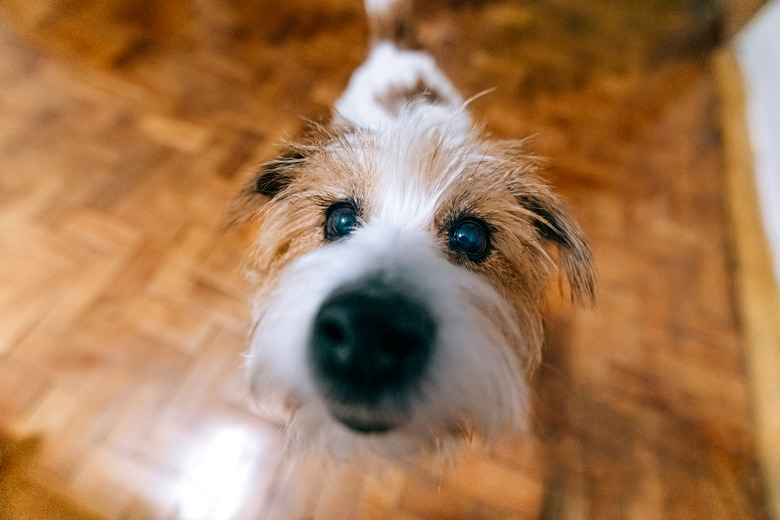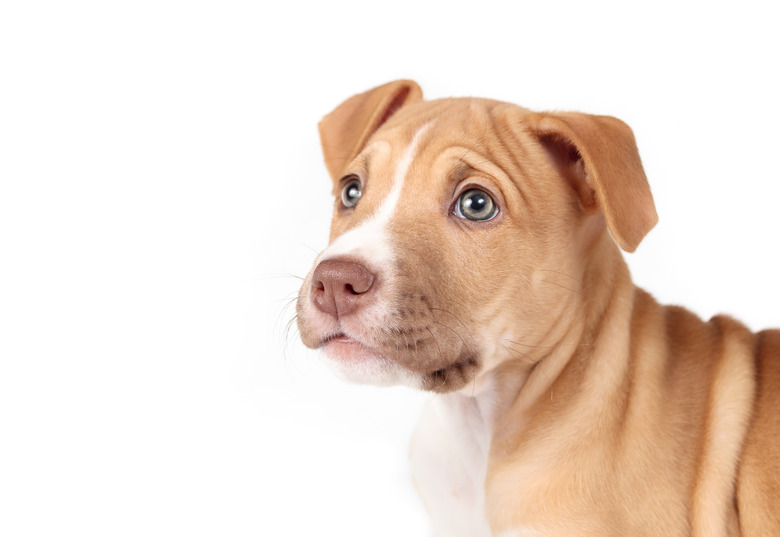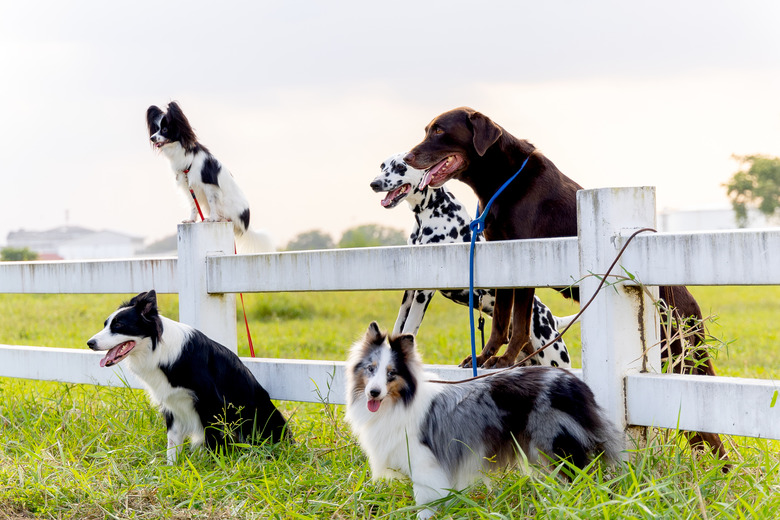5 Things To Know About Dog Eyesight
Getting to know the way that dogs look at the world helps us to better understand them. Our canine companions perceive things very differently than we do. When a Chihuahua looks at your face, you appear as tall as a five-story building seems to an average adult human. Their view of the world contrasts significantly with a sighthound's. Dogs that depend on their eyes to hunt, such as Salukis, have incredible visual acuity and a field of vision designed to spot small prey species. With these variations between two breeds of dogs, just imagine how much differently they see things than humans.
Here are five fascinating facts about dog eyesight that will help you to better understand your dog's point of view.
1. Are dogs nearsighted in normal light?
1. Are dogs nearsighted in normal light?
No, not all dogs are nearsighted. When dogs have had their eyesight tested using retinoscopes, most are neither near nor farsighted. However, in visual acuity tests, most dogs appear to have 20/75 vision in the daytime. That means they have to be 20 feet away from something to see it as clearly as we would from 75 feet. Labradors, bred as excellent retrievers for hunting, have almost 20/20 vision.
However, nearsightedness and farsightedness do occur in some breed. Nearsightedness, or myopia, is a condition that makes it difficult to see things close up. Some breeds, such as German shepherds, miniature schnauzers, and Rottweilers, are more prone to developing nearsightedness.
Farsightedness, referred to as being hyperopic, is more uncommon but does affect some breeds of dogs. Australian shepherds, Alaskan malamutes, and Bouvier des Flandres are prone to this condition.
2. Do dogs see ultraviolet?
2. Do dogs see ultraviolet?
Yes, dogs can see ultraviolet light. As humans, we have a lens that filters out ultraviolet light. Until 2014, we assumed that dogs could not see into the ultraviolet range. That's when a study looking at the eyes of 38 mammal species showed that many of them, including cats and dogs, could see ultraviolet light. It was discovered that 61.3% of ultraviolet light reached a dog's retina.
Why dogs have this ability is unknown, but it appears that animals with better night vision, such as dogs, can see ultraviolet light. Certainly, anything that absorbs ultraviolet light would be more visible to dogs, allowing them to see things we cannot. This ability enables dogs to see dried urine, which is one of the things that absorb ultraviolet light. it is possible that this aids them in tracking and hunting prey.
3. Do some dogs have a blind spot under their nose?
3. Do some dogs have a blind spot under their nose?
Yes, dogs with long noses have a blind spot right under their nose! Because dogs have eyes that are wider apart than ours, they have less binocular vision. Binocular vision is where the field of view of each eye overlaps and creates depth perception. Dogs see best when they look straight ahead. Unfortunately, a long nose can get in the way and create a blind spot right under their nose. Horses have a similar blind spot. As a result, there is a 10 degree difference in the binocular field of view between short and long-nosed dogs causing this blind spot.
4. Are dogs completely colorblind?
4. Are dogs completely colorblind?
No, dogs do see some colors. Dog and human retinas both contain cells called cones. These are used to differentiate colors. Humans have three cones, and dogs have two, meaning that dogs have some limited color perception. They see yellow and blue very well, and while they can distinguish red from blue, they have difficulty doing that with green and red. Their color perception is similar to a person who has red-green color blindness.
5. Do dogs have a 240 degree field of view?
5. Do dogs have a 240 degree field of view?
Yes, dogs have a 240 degree field of vision. Dogs have eyes set further apart than ours, giving them a much greater field of vision. Human eyes are located on the front of our heads, limiting our vision field to 180 degrees.
This adaptation gives dogs enhanced peripheral vision and aids them in hunting and avoiding danger. It also helps them navigate their surroundings so that they are less likely to bump into things as most of their body is behind their head rather than below it, as it is for us.
Additionally, it allows them to monitor the body language of other dogs, enabling better communication and conflict avoidance. Because they are predators, they have a larger blind spot behind them than a prey animal such as a horse, which has a visual field of about 335 degrees.
Now that you have learned about how dogs see the world, you will be able to better understand the things that motivate and distract them when you spend time together. This kind of knowledge makes us more empathetic towards our companion animals and better at providing them with the things they need to have the best life with us.


